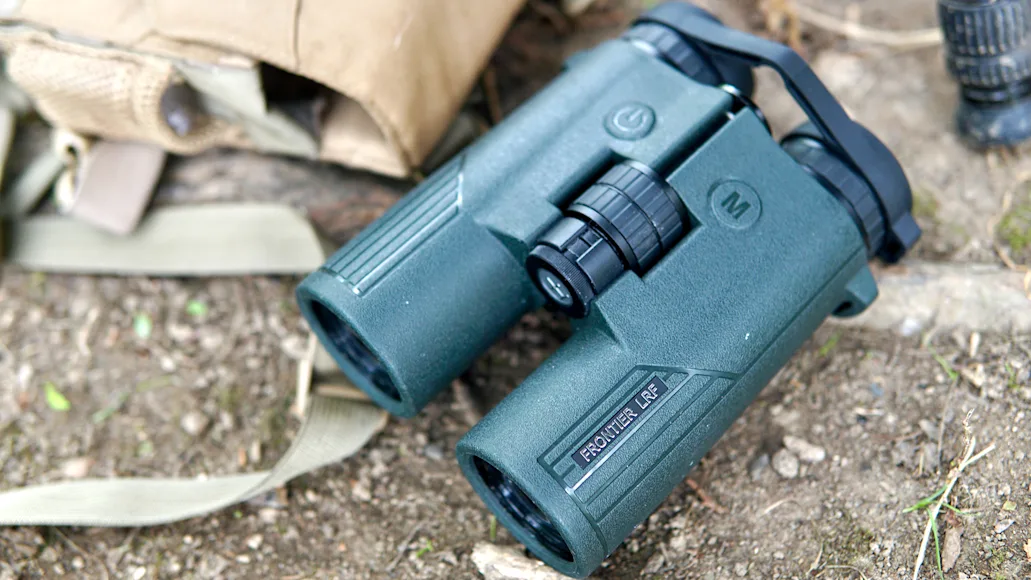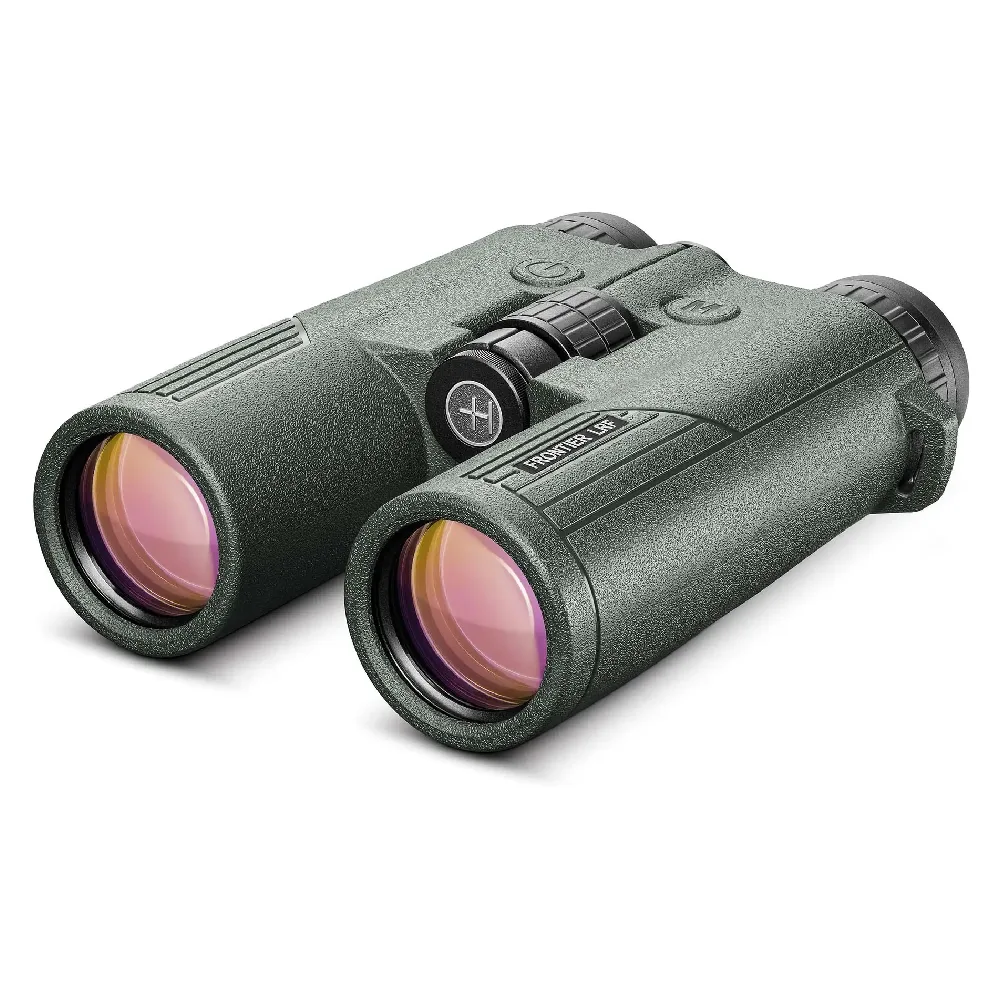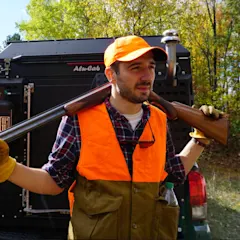The way things are going, it seems like every hunting binocular will have a rangefinding function in the near future. Less than 10 years ago, only a handful of premium optics companies made rangefinding binoculars. But with the growing popularity of long-range shooting and interest in ballistics, more and more are hitting the market. The problem for many hunters and shooters is that these tools have historically been quite expensive. But with more competition comes lower prices—and the Hawke Frontier LRF range-finding binocular is a perfect example.
As of this writing, the 8x42mm model has a street price of only around $900—which is very cheap for a decent rangefinding binocular. So, is it worth it? To find out, I spent weeks testing the Frontier LF. Here's my full review.
Specs and Overview
Magnification: 8x42 mm (tested) and 10x42 mm
Ranging Capabilities: 11 - 1,968 yards
Eye Relief: 16mm
Water Resistance: Yes
Nitrogen Filled: Yes
Weight: 35.2 oz
Price: $999 MSRP

Hawk’s Frontier LRF comes in 8x42mm or 10x42, and I tested the former. The glass is coated to resist fog, and the tubes are nitrogen-purged and waterproofed. The unit has an advertised ranging capability of just under 2,000 yards with a low-end of around 11 yards.
Onboard, there’s enough tech to give compensated yardages for angled shots. The reticle is a circle with four lines. I found it to be a bit big, but nice and clear. There is no app to pair with the binocular and no ballistic software, so you’re on your own for making those calculations, which, of course, you can do with a separate ballistics calculator or with a range chart.
The eyecups on the Frontier are fully replaceable should you break one, and the unit comes with objective lens covers and eyepiece covers, as you would expect. What you might not expect at this price is the nice chest harness that's included.
Related: Leupold BX-4 Range HD Binocular Review
How I Tested the Hawke Frontier LRF

I tested the resolution of the Fronter LRF with a 1951 USAF Resolution chart at 50 yards. I conducted the test both during the day and at night with a flood light to simulate twilight. I then took the binocular into the field to test its maximum ranging capability and ranged targets from grass and fence posts to live game.
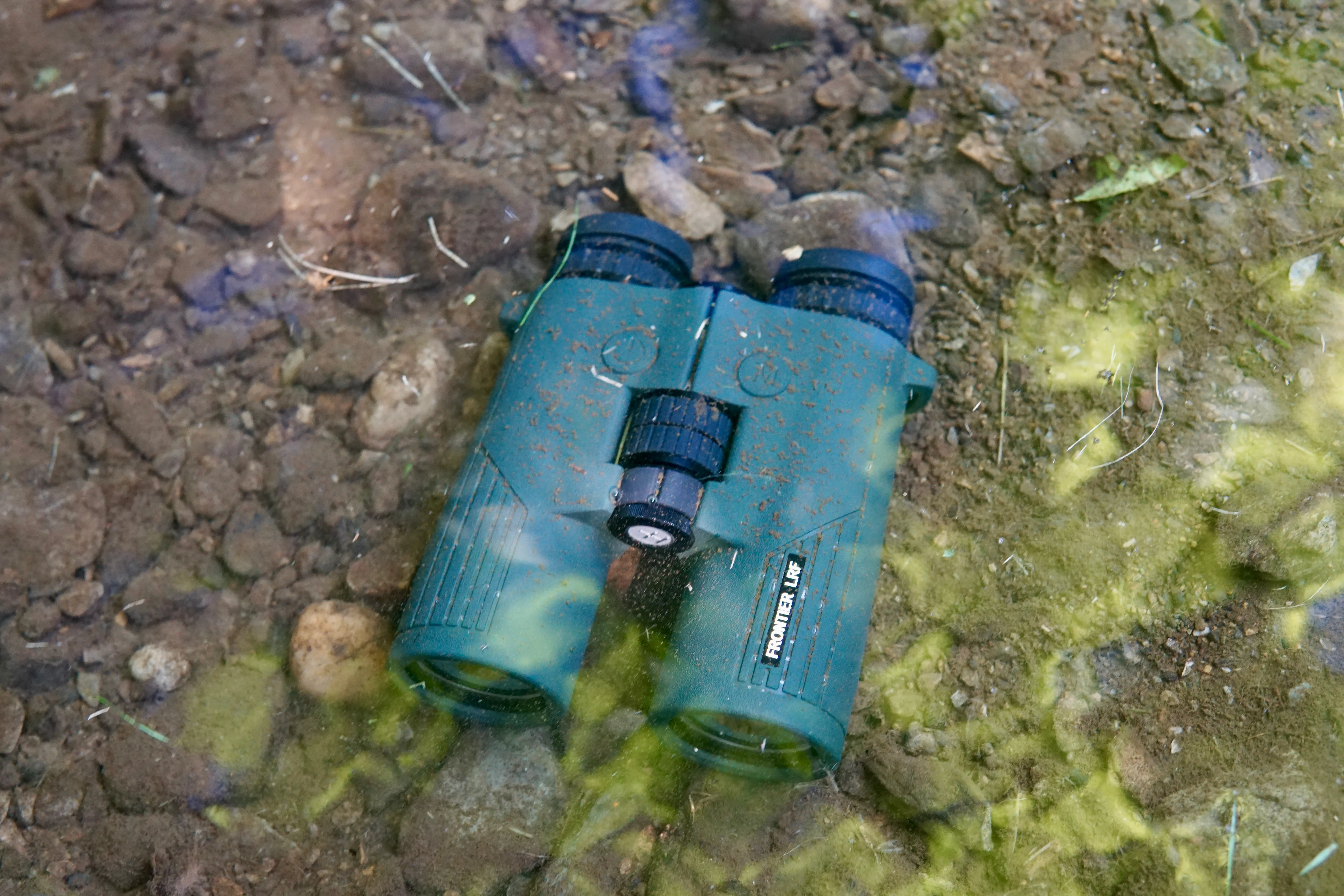
With that out of the way, I put the Frontier through a torture test with a 30-minute submersion in water and a 30-minute ride in the freezer. I did this to test the binocular’s ability to resist fog and to see if it still worked after taking a dip. Throughout the test, I evaluated the functionality of the binocular and its ranging functions. I also made note of any issues with fit and finish and construction.
Test Results

The Frontier LRF performed well in my tests, especially given it's price. As far as ranging capabilities, I could mark targets out to around 1,200 yards. I found the resolution of the glass to be good, with a middle-of-the-pack score on the resolution chart during the day and a similar score at night. I noticed some slight blurring at the edge of the glass and a few color artifacts when looking at black-and-white paper. Overall, the quality of the glass sits squarely with the price point. It's not as good as that of top-end binos that cost two or three times as much, but nor can you expect it to be.
The speed of the rangefinder was adequate. The buttons felt nice and crisp with positive clicks, and I found it easy to get a clear picture of the reticle when adjusting the diopters. What’s also nice is that the diopters click like a watch bezel or scope turret, which is a feature I’d wouldn’t expect on a binocular at this level.
As far as the construction goes, I really like the rubber coating that Hawke uses. It’s tough but not too grippy. It reminds me of more old-school binoculars, and it slides in and out of a binocular harness with ease.
The battery on the Frontier LRF is changed via a knurled front stud in the hinge. This means you can’t mount some tripod adapters to this binocular, but that’s not a dealbreaker. The knob is a nice feature should you need to change a battery quickly in the field.
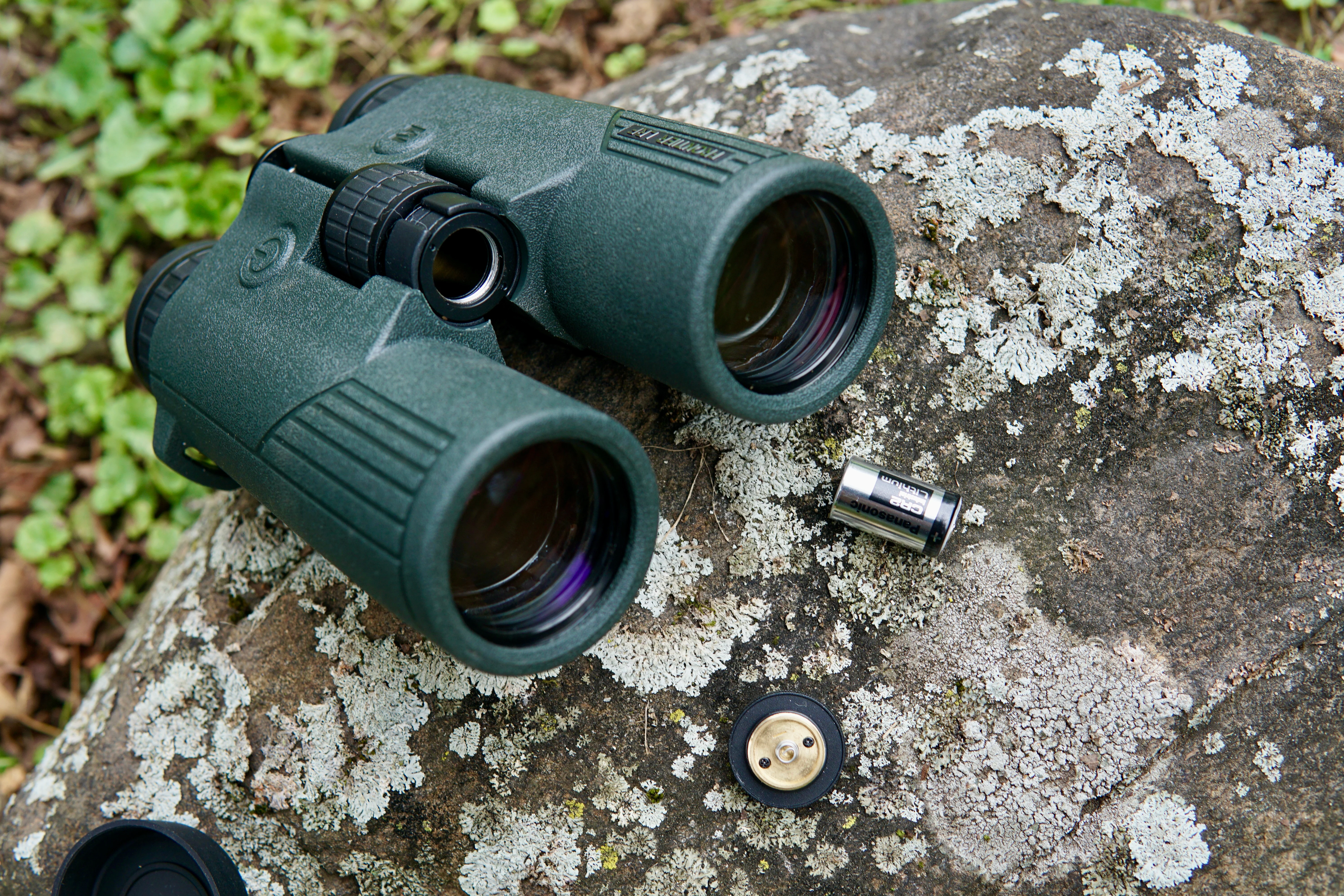
The Frontier LRF passed the torture test and maintained functionality out of the water and out of the freezer. Out of the freezer, it took a little time for the glass to unfog before I could spot my resolution chart. You probably won't go on many hunts where the temperature goes from below freezing to 70 degrees or vice versa like in my test conditions, but compared to the many other binoculars I've run this test on, the Frontier LRF was a little slow to unfog. That said, the electronics kept working flawlessly.
Out of the freezer, I was shocked to get a 0.8-yard reading when I clicked the button while pointing the binocular the floor. I was just making sure the rangefinder still worked. After the fog cleared, I played around with other close ranges, and I got readings down to 1 yard. With reliable close-range functionality like that, you wouldn’t have any problem ranging bow-hunting targets down to 10 yards and less. The binocular ranged out to distant targets, too, after the torture test.
Related: Best Binoculars of 2024, Tested and Reviewed
Hawke Frontier LRF Final Thoughts
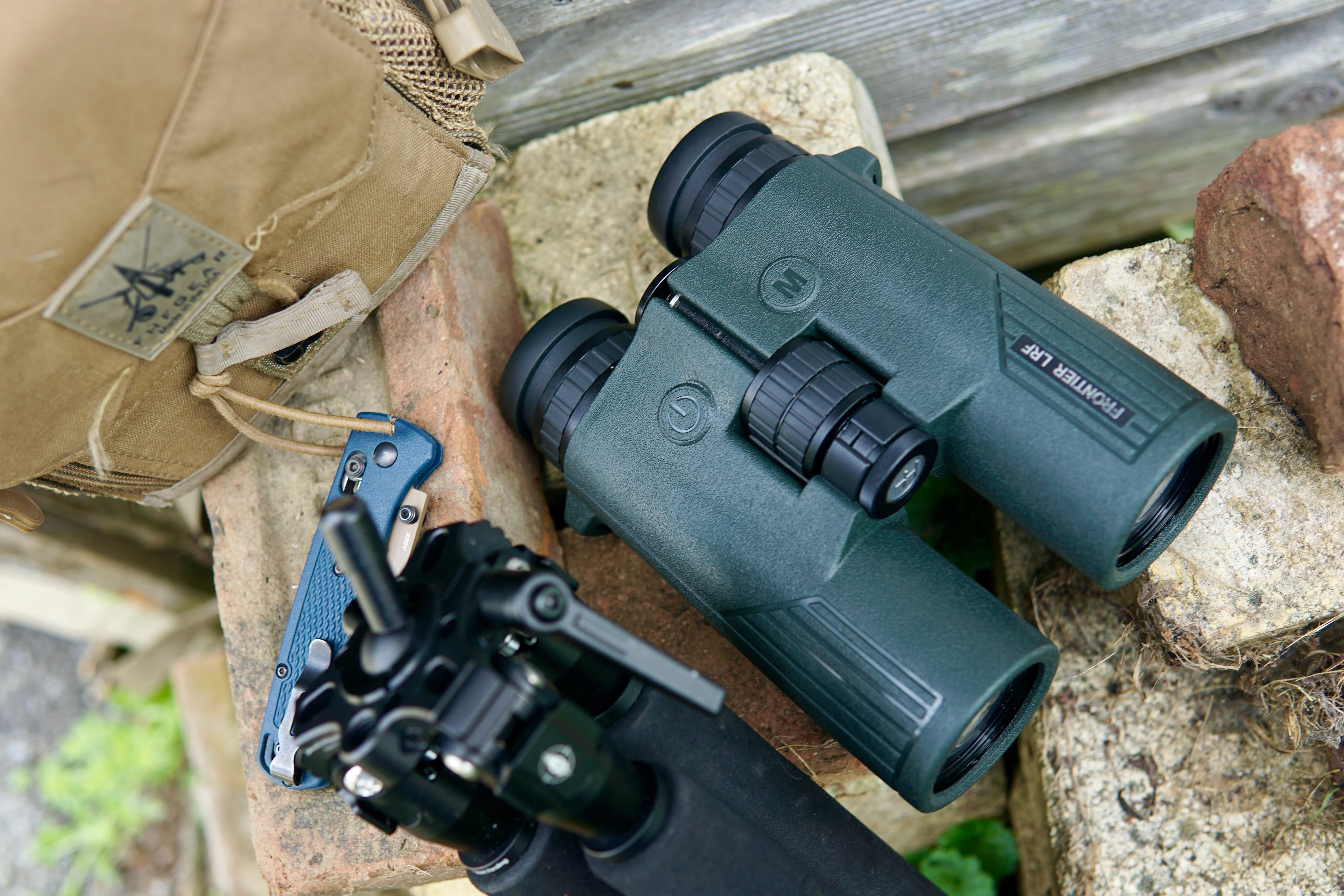
This is a lot of binocular for the money. It might not have bells and whistles, like a ballistic calculator, but that’s OK. Most other rangefinding binoculars $200 to $800 higher in price don’t either. Yes, it's faster to have a ballistics calculator on board, but as noted earlier, this unit can still do the job in the field or in a match as long as you have separate calculator or range card.
The lower-end magnification is more versatile for things like bowhunting; it’s cheaper, brighter, and has a wider field of view. Again, the glass is not top-end, but neither is the price. I wouldn’t hesitate for a second to take this binocular just about anywhere, and the reliable rangefinding functionality—and price—more than makes up for what little you lose in image quality. In the end, the Frontier LRF is basic but solid rangefinding binocular at a great price.
Why Trust Us
For more than 125 years, Field & Stream has been providing readers with honest and authentic coverage of outdoor gear. Our writers and editors eat, sleep, and breathe the outdoors, and that passion comes through in our product reviews. You can count on F&S to keep you up to date on the best new gear. And when we write about a product—whether it’s a bass lure or a backpack—we cover the good and the bad, so you know exactly what to expect before you decide to make a purchase.

